This week on the Revised Introduction to Japanese History: our first foray into the age of civil war! We’re looking to understand the conflicts of the Sengoku by examining the rapid falls from power during this time of the Yamana and Hosokawa clans.
Sources
Berry, Mary Elizabeth. The Culture of Civil War in Kyoto
Ichikawa, Yuji. Muromachijidai no chihou shihai to chiiki kenryouku
Ogawa, Makoto. Yamana Souzen to Hosokawa Katsumoto.
Images
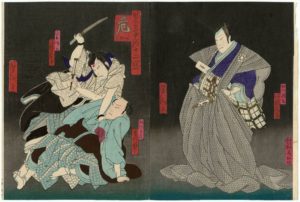
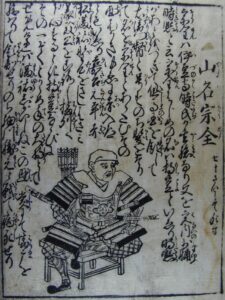
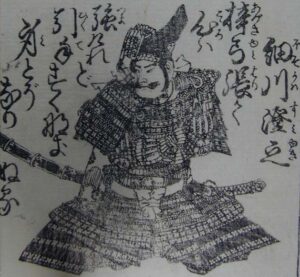
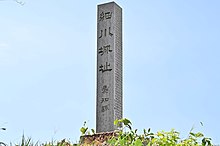
Transcript
When we talk about the Sengoku Jidai–the era of warring states which came after Ashikaga rule fell apart in the 1460s and 70s–it is, from what I can tell, basically mandatory to take a moment and introduce the phrase “gekokujo.”
Seriously, I don’t think I’ve ever read something on this period that doesn’t include the mandatory paragraph describing what this means.
And admittedly, there’s good reason for it. The three characters in that phrase literally mean “the low conquers the high”, and from a certain perspective it’s a pretty apt description of what happened in Japan during this period.
The next two weeks are going to be all gekokujo, all the time. You see, the Sengoku period is obviously an age of great turbulence–there’s literally no way I could cover all the ins and outs of the fights and alliances and betrayals and all that good stuff in any meaningful way. So instead, I’m going to use this notion of gekokujo as, to use some fancy historian phrasing, a lens through which to view the period: a way of making sense of the key ideas of the time, of finding patterns in a chaotic age.
This week, we’re going to focus on two of the most powerful samurai clans going into the Sengoku period–which were brought low by the chaos of war and either annihilated or reduced to bit players in future politics. Next week, we’re going to take a look at the other side of things–two warrior families that began this period in comparative obscurity but which rose to substantial power and prominence over the course of the Sengoku era.
The idea being, again, to give you some sense of the turbulence of the period without overwhelming you with details on the period.
And we’re going to start with two names that are already familiar to you: the Yamana and Hosokawa families. These are, of course, the two rival clans who took up the excuse provided by the succession crisis of the 1460s to fight each other for control of Kyoto–in other words, two of the responsible parties for the Onin War.
We’ll start with the Yamana, a family very much of what you might call the “samurai aristocracy.” You see, they could trace their lineage back to the line of the Seiwa Minamoto–the warriors descended from the emperor Seiwa and who counted Minamoto no Yoritomo, founder of the first warrior government, among their number.
Specifically, the Yamana were descended from one Minamoto no Yoshishige, a distant cousin and rough contemporary of Yoritomo’s. Specifically, the Yamana were descended from Yoshishige’s illegitimate child Yoshinori, who took the surname Yamana to distinguish himself from his father’s legitimate kids–a name he took from his place of residence, in what’s now Yamana-machi in Gunma prefecture.
His father’s legitimate children, meanwhile, started using a different surname: Nitta, derived from their own place of residence (also in modern Gunma prefecture).
Both the Yamana and Nitta did well for themselves under first Yoritomo and his descendants, and then the Hojo–both were counted among the shogun’s gokenin, or personal retainers, and considered very reliable supporters of the Kamakura shogunate given their Minamoto ancestry.
However, their fortunes took starkly different turns in the 1330s, when the Kamakura government fell apart. If the name Nitta sounds familiar, it’s because we’ve encountered it before; Nitta Yoshisada was one of the prominent commanders on the southern court, anti-Ashikaga side of things until his death in battle in 1338.
The Yamana clan leadership was, by contrast, more…let’s be nice and call it ‘enterprising in their allegiance.’ And what I mean by that of course is completely mercenary about who they chose to support; the Yamana started off on team southern court, but flipped sides repeatedly over the course of the conflict based on whoever was making them the better offer.
Which is not going to make you a lot of friends, but provided you time things right it will result in a lot of people throwing money and land at you to get you to flip their way. By the 1390s, the Yamana were one of the wealthiest families in the country. The head of the Yamana clan, Yamana Ujikiyo, held the title of shugo over 11 different provinces–he was jokingly nicknamed “rokubun no ichi dono”, or roughly “Lord 1/6th”, since his family personally held slightly over 1/6th of the 60 traditional provinces of Japan.
Now, despite being one of the most powerful people in the country Yamana Ujikiyo’s time as leader of the Yamana clan was…well, not smooth sailing. The shogun in the 1390s was Ashikaga Yoshimitsu, probably in hindsight the single best leader of the Ashikaga years, and a clear-minded pragmatist who was not blind to the dangers presented by such a powerful vassal.
In fact, Yoshimitsu had tried to reign in the Yamana in 1389 by ordering Ujikiyo, who had not been family head originally, to attack the then-head of the Yamana family (his own nephew)–hoping clearly to divide the Yamana clan and weaken it.
This didn’t work as well as he’d hoped, however; Ujikiyo was able to win the resulting conflict far too easily. Instead, Yoshimitsu began to clamp down more openly on Ujikiyo–eventually leading to an outright Yamana clan rebellion in 1392. With massive forces to call on, Ujikiyo’s armies made it as far as the outskirts of Kyoto–but he was eventually defeated, and Ujikiyo killed in the fighting.
However, this didn’t keep the Yamana down for long; two generations down the road, another ambitious leader would take the reigns of power for the clan and lead it back to greatness. This was Yamana Souzen born in 1404 and succeeding as family head in 1433 after his father retired from politics due to ill health.
Souzen would first emerge on the national stage in 1441 as he took advantage of an opportunity presented to him. That opportunity was the assassination of Ashikaga Yoshinori, a tyrannical shogun notable for his paranoia and fondness for executing people–which eventually caught up with him when another major family head, Akamatsu Mitsusuke, became convinced he was next on Yoshinori’s hit list and bumped the shogun off first.
Yamana Souzen seized the opportunity, martialling an army to hunt down and kill Akamatsu and “show his loyalty to the Ashikaga”–conveniently also rebuilding his clan’s fortunes by conquering Akamatsu lands in the process.
As a result, Yamana Souzen emerged as one of the most influential men in the inner circle of shogunal politics–and at a good time to boot, because after the shogun Yoshinori’s death the next two shoguns–Yoshikatsu and Yoshimasa– were both children easily influenced by their advisors.
Yoshimasa’s reign, however, was not without its problems–chiefly the succession dispute we discussed last episode. And Yamana Souzen was one of the main instigators who turned that succession dispute into an all-out war.
For a quick reminder: Ashikaga Yoshimasa hated being shogun and wanted to retire ASAP, but was in such a rush he kinda screwed things up–he promised the job to his brother Yoshimi, but then when he had a son (or when his wife slept with another man to get pregnant–nobody knows either way) began to flip flop on who to hand things off to.
One of Yamana Souzen’s main rivals (who we’ll talk about in a second) was very close to that brother Yoshimi, and so Souzen naturally decided to back the claim of the newborn son, Ashikaga Yoshihisa. Clearly he hoped to put a boy indebted to him into the job of shogun, and use the boy as a vehicle for his own influence to run things from behind the scenes.
Yamana Souzen would come to run the pro-Yoshihisa side of the emerging Onin War, and I guess technically he did win in that Yoshihisa did end up becoming shogun. But…not really.
The Onin War itself was, of course, inconclusive–neither side of the succession dispute was able to gain a clear advantage one way or another. Indeed, the war mostly because Yamana Souzen and his opposite number in the opposing camp both died in 1473, and their successors decided that continuing the war was not to their advantage.
Still, the Yamana were well set up as the country broke down into civil war. Their preferred candidate was on the throne of an albeit substantially weakened Ashikaga shogunate, and they were still one of the wealthiest families in the country–Yamana Souzen was the shugo of six different provinces by the time of his death (Yamashiro, Tanba, Bingo, Aki, Iga, and Harima Provinces, specifically).
So hey, they’re naturally going to be very successful in an age of civil war where that much land (and the wealth from that land) would immediately vault you to the top of the most powerful contenders, right?
Well…no. In point of fact, the Yamana clan would collapse dramatically over the course of the Sengoku civil wars. They wouldn’t be wiped out all together like some of their fellow big families from the Ashikaga years–but they also very much came out on the losing end of things.
But how, I hear you wondering, could anyone coming in with such a massive advantage lose?
Well, this in part comes back to a question of leadership–Yamana Souzen’s successor Yamana Masatoyo did not have a particularly stellar aptitude for politics, and preferred spending time in the cultural center of Kyoto to actually governing his multitude of lands.
Fun fact: I saw one claim that Yamana Masatoyo was so into the tea ceremony that the retired shogun Yoshimasa (the same guy whose indecision triggered the succession crisis behind the Onin War) gave Masatoyo a tea set. But not just any tea set–the Tsukumo Nasu, a famous Chinese-made set from the 1100s that had belonged to Ashikaga Yoshimitsu, the most famous of the Ashikaga shoguns. That said, not every source tracing that tea set’s history (it was eventually purchased by a Mitsubishi heir and is now in a museum in Tokyo) mentions him as an owner, so I’m not totally sure this is true.
Regardless, Masatoyo clearly preferred the finer things in life to the drudgery of government, and in an age of civil war that wasn’t really the sort of thing you could get away with.
And here, we have to take a moment to talk about an important institution of the late Ashikaga years and the age of civil war: the kokujin.
That term roughly means something like “people of the provinces”, but that doesn’t fully capture its meaning. I’ve seen it translated as everything from “armed proprietors” to simply “provincial warriors”–I don’t think there’s a clean or easy way to render it into English, frankly.
Broadly, kokujin represented what you might call the “middle ranks” of samurai society–not as influential as the major warrior families who spent time in Kyoto and got appointments as shugo, but within their specific home provinces kokujin families were influential. The term has roots going back to early medieval Japan and the time of the Minamoto shoguns–originally, it referred either to a local overlord of a province (someone who ruled an area they were from, in other words), or to a jito–a samurai supervisor of a shoen estate–who was supervising the area he was from.
These kokujin were often gokenin–direct vassals of the shogun himself, a position of substantial prestige and which gave the shogun (in theory) a check against the power of their shugo military governors.
However, during the Ashikaga years the independent power of the kokujin began to fade. The reasons why are many fold–most broadly, the compromises Ashikaga Takauji and his successors made to empower the big shugo families and convince them to join the Ashikaga cause also made it easier for the shugo to control the kokujin.
Many shugo relied on their new income from Takauji’s decrees (allowing the shugo to collect far more in taxes than had previously been the case) to simply buy off the local kokujin, in essence giving them a cut in exchange for the kokujin swearing obedience to the shugo family.
However, attempts to keep kokujin under control didn’t always work. For example, in 1387, the Shiba family–shugo of Shinano province in the center of Japan–found that kokujin in the area had organized themselves into a defensive league to physically prevent the Shiba or their followers from entering the province.
Apparently they were convinced the Shiba planned to disregard the traditional independence of kokujin families in the region.
And they were enormously successful, fighting off a Shiba attempt to forcibly seize the province in 1387, and another one in 1399. In 1402 the shogun Ashikaga Yoshimitsu stepped in and stopped the fighting by simply declaring Shinano a part of his personal landholdings, and therefore removing any need for a shugo–in essence, allowing the local kokujin to continue on as before.
Kokujin challenges to shugo authority only grew as the central power of the Ashikaga bakufu broke down. In some cases, specific lords were able to bring kokujin around either by means of bribery or pure military force.
But in others, the kokujin were able to drive off their shugo–particularly once it became clear there was no more central authority capable of forcing a disliked shugo onto a province.
And this is exactly what happened to the Yamana clan, which controlled six provinces–but six provinces that were scattered across the central third of Honshu, making it extremely challenging to actually manage all that land (particularly with any sort of personal touch).
Over the subsequent decades, the Yamana lost more and more of their traditional lands to rebellions by the kokujin, as former followers of the Yamana declared themselves independent of the shugo family. By the 1500s, the Yamana controlled only two provinces out of their original six–Tajima and Tanba provinces to the west of Kyoto itself.
To make matters worse, after Yamana Masatoyo’s death–some time between 1499 and 1502, the precise date being a matter of dispute–the Yamana clan itself began to fracture into rival lines.
You see, the reason the Yamana were able to hang on to these two provinces was that the family was physically present there–and able to manage those lands directly.
However, those two branches of the Yamana in Tajima and Tanba, as they spent more time in their respective provinces, began to grow apart, until they were functionally different wings of the same family–each one believing it was the “lead branch”, so to speak, of the Yamana family tree.
Once again, I bet you can guess where this is going.
The Tajima branch did eventually manage to win, led by Yamana Suketoyo, who took the position of Tajima province shugo in 1528. But by the time he managed to reunify the Yamana, it was frankly speaking too late. Suketoyo ended up running afoul of the first of Japan’s unifiers who would bring an end to the age of war, Oda Nobunaga, and died in battle in 1580.
A branch of the Yamana did survive, chiefly because they did a better job picking winners to follow in the future. The Yamana clan itself survived all the way to the abolition of feudalism in Japan, but would never again be anything other than a bit player in politics.
Still, I imagine the later leaders of the Yamana clan could take some comfort in the fact that they were not alone in this fate–their rivals in the Hosokawa clan suffered more or less the same.
The Hosokawa clan, of course, led the fighting on the other side of the Onin War which ripped the Muromachi bakufu apart–and in many ways the story of their origin is very similar to that of the Yamana.
Indeed, their story is remarkably similar right down to their origins–like the Yamana, the Hosokawa could trace their descent back to the line of Seiwa Minamoto warriors whose ancestry in turn went back to the imperial family.
The Hosokawa specifically branched off a bit later–they were actually an offshoot of the Ashikaga, who remember were their own branch of the Minamoto line (taking the surname Ashikaga to distinguish themselves from the main line).
Much like the Ashikaga, the Hosokawa took their name from a landholding–in this case, their place of residence, Hosokawa village of what was then Nukata County, Miikawa Prefecture (now a part of Okazaki city in Aichi Prefecture).
Given their familial relationship with the Ashikaga clan, they naturally came down on the side of Ashikaga Takauji during his rebellion against Emperor Go-Daigo. Of course, they weren’t altruists about it–the family relationship certainly helped, but so too (one imagines) did the substantial promises Takauji and his successors made to the Hosokawa about the amount of land and treasure he would give to them.
By the end of the war between the Northern and Southern Courts, the Hosokawa family were shugo of eight separate provinces.
And I can’t really say they were overpaid, so to speak–they certainly contributed a great deal to the war effort on the Ashikaga side. In particular, the family head in the later decades of the war, Hosokawa Yoriyuki, is one of the most titanic figures on the Ashikaga side of things. He took the reigns of the clan in 1352 at the age of 23 after his father was killed in the fighting, and led an army to avenge his father’s death and kill several members of the Hosokawa family who had defected to the Southern Court side.
Along the way, he also defeated the Yamana clan during one of their flip flops over to the Southern Court–setting up the rivalry, one supposes.
Hosokawa Yoriyuki would go on to be so successful that he’d be named Kyoto Kanrei–essentially second in command of the Muromachi bakufu after Ashikaga Takauji himself, and after Takauji’s death continued to serve both his son and grandson.
A full accounting of his impressive deeds is beyond us here, but the highlight reel would have to include leading the conquest of the Chugoku region (the westernmost part of the main island of Honshu), as well as negotiating the defection of several prominent Southern Court followers to the Ashikaga (including the great Kusunoki Masashige’s grandson), and finally, late in his life, being the lead negotiator who cut the surrender agreement for the Southern Court which ended the fighting.
It was, by pretty much any accounting, a spectacular career.
Hosokawa Yoriyuki would die in 1392, the same year the southern court itself surrendered–his successors would oversee a family that had thanks to his efforts become one of the most influential players in the entire country.
They would retain that position for half a century, before the rising power of the Yamana clan and Yamana Souzen began to challenge the Hosokawa, led by Hosokawa Katsumoto.
Initially, mind you, the relationship between the two men actually wasn’t bad; Katsumoto and Yamana Souzen started off as political allies working together against other influential clans at court, and the two actually entered into a marriage alliance at one point (Souzen was married to Katsumoto’s daughter). However, as Yamana influence at court grew Katsumoto began to view them as a greater threat–and the alliance began to break apart.
And that brings us again to the Onin War–this time on the opposite side, with Hosokawa Katsumoto deciding to back Ashikaga Yoshimasa’s brother Ashikaga Yoshimi.
Again, we know how this war ends so I won’t belabor it much.
Hosokawa Katsumoto, like Yamana Souzen, died in 1473, and the war he helped start ended inconclusively. Yet, like the Yamana, the Hosokawa were still in a strong position at the start of the age of civil war–but they too would find themselves crashing back to earth before long.
Once again, the issue was partially one of leadership. Katsumoto’s successor was his son, Hosokawa Masamoto, a brilliant and ruthless commander who was unafraid to take bold steps to expand his power.
And I do mean bold. In 1493, Masatomo led an army to Kyoto claiming to support the sitting shogun in his aim of rebuilding Ashikaga control of more of the country–only to launch a coup once he got there, removing the sitting shogun and replacing him with a younger and more pliable relative, and going on to rule the city of Kyoto and its surroundings (the wealthiest part of the country by far from behind the scenes himself.
Masamoto’s leadership would carry the Hosokawa to a leading position, but he made a fateful mistake in his leadership–he did not have any children. In fairness, he was fairly young; his takeover of Kyoto in 1493 happened when he was only 27, so probably not thinking deeply about his own mortality or questions of succession.
Why Masamoto never had children is a matter of some dispute. There are different theories out there; the most commonly cited one is that Masamoto was gay, and thus not terribly interested in the traditional method by which one acquires a child, but he was also extremely devoted to the religious mystic syncretic tradition known as Shugendo–which does have some strong taboos around sex.
And regardless of why he didn’t have biological kids, Masamoto did have a plan in place for the succession–three of them, actually, because he adopted three different sons from vassal families (known to history respectively as Hosokawa Sumimoto, Hosokawa Sumiyuki, and Hosokawa Takakuni.
But the thing is, three heirs in a certain sense creates as many problems as it solves, because in the end you can only pick one of them–and the other two are going to be, to put it mildly, a bit put out about it.
And so, of course, it went with the Hosokawa. Eventually, Hosokawa Masamoto settled on Hosokawa Sumimoto as his preferred heir–largely, one imagines, because Sumimoto was a distant relative of his from another branch of the Hosokawa family.
But this did not make Hosokawa Sumiyuki–adopted from the Kyoto aristocratic family known as the Kujo–very happy, particularly because prior to Sumimoto’s adoption Sumiyuki had been promised that he would be the heir.
And so Sumiyuki began to conspire to take the job for himself, and in 1507 formed a conspiracy with three of his adoptive father’s bodyguards. On the 11th day of the 8th lunar month of 1507, as Hosokawa Masamoto was preparing to take a bath, he was jumped by said bodyguards and stabbed to death. He was 42 years old.
After Masamoto’s death, things went very badly for the Hosokawa in extremely short order. Sumiyuki, of course, declared himself the new head of the family with the backing of some Hosokawa vassals as well as the Ashikaga shogun (who at this point was basically a Hosokawa puppet).
Sumiyuki was not, however, successful in chasing down the brother whose role as heir he hoped to seal–Sumimoto successfully escaped Kyoto for Omi province with the help of other Hosokawa retainers who were still loyal to him.
Those retainers then began to assemble an army, and within a month Hosokawa was fighting Hosokawa in a good ol’ fashioned intra-clan civil war. Sumimoto’s side did win out in fairly short order, and Sumiyuki would commit suicide before the year was out as many who had supported his coup began to abandon him.
But this was not the end of the Hosokawa family troubles, because waiting for them in the wings was another long time rival–the Ouchi clan of the Chugoku region of Western Honshu.
We’re not going to talk about the Ouchi here too much because we’ll be coming back to them next week, but simply put they were another of the major shugo families of the Ashikaga years.
And they had one other big advantage on their side in 1507. Remember how, in 1493, Hosokawa Masamoto had come to power by leading a coup against the sitting shogun and replacing him with a more pliable Ashikaga relative?
Well, the shogun Masamoto had replaced, Ashikaga Yoshitane, was still kicking around–he’d spent the intervening years looking for someone, anyone who would help him retake his family seat, and had settled on the Ouchi as his preferred candidates to do so.
And so in 1507, the Ouchi, smelling blood in the water, led an army to Kyoto to “restore the true shogun to power” and “punish the Hosokawa usurpers.”
Hosokawa Sumimoto fled the capital to escape. But wait, wasn’t there a third adopted Ashikaga son?
Why yes there was, and that son, Hosokawa Takakuni, decided to remain in Kyoto–and when the Ouchi and Ashikaga Yoshitane got there, he promptly asked that they make HIM the new head of the Hosokawa clan, since his treasonous brother obviously was not loyal to the “true shogun.”
What emerged was a truly weird conflict where the Hosokawa clan divided between pro-Takakuni vassals–who fought alongside the Ouchi and the shogun Ashikaga Yoshitane–and pro-Sumimoto vassals, who rallied to attempt to re-take Kyoto alongside those still loyal to the Hosokawa puppet shogun.
From here, things spiraled pretty predictably for the Hosokawa clan. Takakuni was ultimately victorious in his contest with his brother (and by the way for those playing along at home, all this means that in the span of a single year the headship of the Hosokawa clan turned over four times–from Masamoto to Sumiyuki to Sumimoto to Takakuni).
However, their civil war took until 1520 to resolve–so 13 years of conflict.
And the ultimately victorious Takakuni would himself be deposed in a coup in 1525, led by several of his own retainers as Takakuni had become increasingly paranoid about conspiracies against his leadership.
The coup plotters ended up replacing Takakuni–who spent the rest of his life exiled from Kyoto–with Hosokawa Sumimoto’s son Harumoto, who would then spend the remainder of HIS life locked in a contest with Takakuni and his son for control of Kyoto.
Both would end up losing when, ultimately, the neighboring Miyoshi clan took advantage of the profound divisions within the Hosokawa house and the weakness of decades of internal conflict to sweep in and drive the clan from Kyoto permanently.
A small branch of the Hosokawa would survive in Tanba province along the Japan sea coast, led by Hosokawa Yusai–who actually was not a Hosokawa by birth, but was the adopted biological child of one of the Ashikaga shoguns.
Yusai is more notable for his poetry and dedication to the arts than his interest in politics, and it was probably that emphasis–plus a talent for picking winners during the final few decades of civil war–that allowed his branch of the family to survive.
However, while they did survive, they were a decidedly minor family in a remote part of the country, and, much like the Yamana, would remain as such all the way until the abolition of feudalism in the mid-1800s.
So, what can we learn about the age of civil war from the dramatic fall from grace of both the Yamana and Hosokawa clans? I think there are a few important lessons about the period to be found here.
First and perhaps most obviously, both the Hosokawa and Yamana were brought low by what we might call civil wars within the two families.
These sorts of divisions were, of course, nothing new–they’ve cropped up in many of the conflicts we’ve discussed over the last 18 episodes, of course. But in an age where there was no overarching authority to step in and try to end those conflicts, well, they could get very deadly for families caught up in them.
As we’ll see next week, more successful clans were also generally better at managing succession disputes to avoid these kind of problems–usually by designating a clear heir to lead the family and setting the stage for a planned handoff of power to them.
Second,strength at the start of the age of warring states did not guarantee victory, or even survival. Both the Hosokawa and Yamana clans were reliant for their power on the legitimacy given to them by virtue of their shugo titles, granted to them by the Muromachi bakufu and the Ashikaga shoguns.
However, after the Onin War, the practical authority of the Ashikaga shoguns shrank away into nothing outside of their home base in Kyoto–the shugo out in the provinces became, practically speaking, independent operators who at best paid homage on paper to their nominal overlords.
Yet this was not quite the boon many shugo may have thought it was, as the Yamana and Hosokawa discovered. Some lost power over their provinces in wars with neighbors.
Others (particularly in the Yamana case), having spent so long in Kyoto that they’d lost touch with their own vassals out in the provinces, realized that the authority of the Ashikaga shoguns was the only thing keeping them in power. Without it, they were overthrown by their own deputies or by powerful local families.
This moment thus marks an important transition for us in terms of both history and terminology. The Hosokawa and Yamana were not successful in transitioning away from the role of shugo and towards the sengoku daimyo–the territorial lords of the warring states era.
Successful sengoku daimyo families–and we’ll look at a few examples next week–were generally more adept at managing the administration in their provinces and focused on keeping their warrior populations happy and loyal to their cause (or at least, comparatively easy to control if they became disloyal).
The families that neglected this, and which focused instead on jockying for control of Kyoto or on external wars while avoiding questions of internal administration…well, things didn’t tend to go great for them.
We’ll see some examples next week.
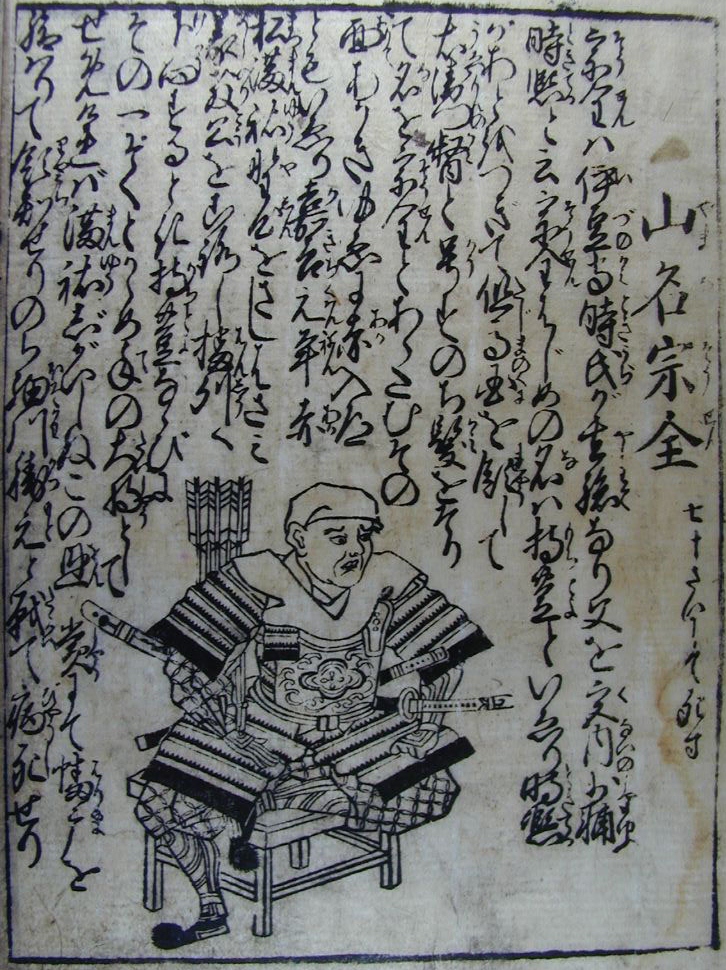
But I WANT a 20 part series on the Sengoku Period in its own right!